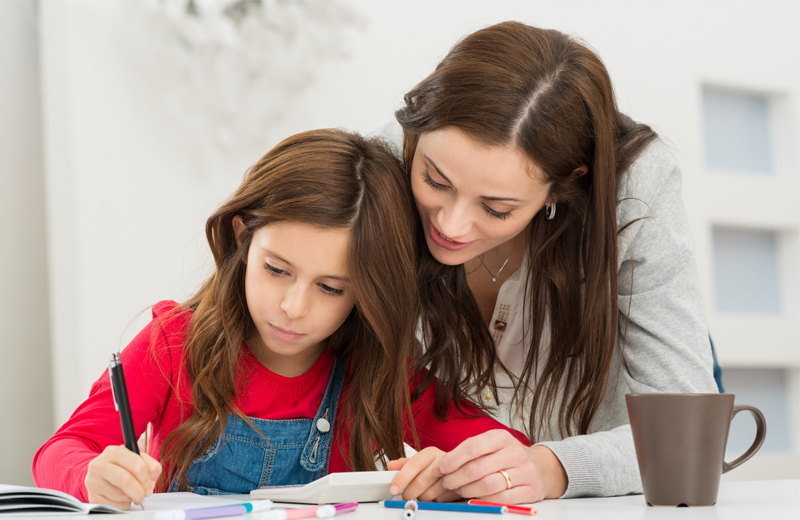Women’s Health
Meditation for a happier pregnancy and an easier delivery

The concept of meditation in not very common in our region, people usually don’t take it seriously, or think it is something you only watch in movies. But nowadays meditation is becoming a big hype and a lot of people are interested about knowing more and learning how to practice it.
During my old job I was under a lot of stress. I was cranky, easily agitated and very nervous all the time . I had migraines and back pain, and all due to stress. That’s when I decided to learn more about meditation to try to calm my self down and release some of the stress I had. But I never knew that it will also come in handy during both of my pregnancies!
Why meditate?
There are many benefits for meditation; such as reducing blood pressure, preventing and treating heart disease, reducing migraines and decreasing many stress-related symptoms. It is also helpful in reducing obsessive thinking, anxiety and depression which are very common during pregnancy.
Meditation is very helpful during and after pregnancy. During pregnancy, it will help you in reducing stress levels, while in labor it will help you deal better with contractions, and after delivery it will assist you in dealing with the challenges of being a new mom.
During labor, the body is usually in control of the process, and not you, which can make you feel uncomfortable and can cause you to get nervous and stressed out. This in its turn will induce the release of stress hormones called catecholamines that act as a muscle constrictor causing the muscles in the body including those of the uterus to tense up. This will lead to experiencing more pain and increasing the duration of labor.
When you are meditating, you are focusing your mind to relax your body. This will allow endorphins- the body’s natural pain killer- to be released and they will help you in their turn in reducing the pain. Practicing mediation on a daily basis will prepare you for a positive labor and delivery experience.
Meditation is also helpful in reducing obsessive thinking, anxiety and depression which are very common during pregnancy.
How to meditate?
Meditation can be practiced anywhere and for any length of time. Any duration of time spent in meditating, however short, is more relaxing than not meditating at all. Therefore you can start out with 5 minutes a day, then gradually you may want to increase the amount time to 20-30 minutes once or twice a day.
To get started:
-
choose a comfortable sitting position.
Sit with your back straight and chin tucked in slightly to lengthen the neck, and allow your back to arch slightly.
-
Position the shoulders over the hips and the ears over the shoulders, and pull the abdomen inward as if you are hugging your baby.
-
Rock briefly from side to side and front to back to establish a point at which your upper torso feels balanced on your hips.
-
Close your eyes and breath through your nose.
If you are suffering from congestion breath in and out through your mouth.
-
Take a few moments to notice the following:
-
Where your body touches the floor or chair
-
Your breath, is it deep or shallow? fast or slow?
-
Your chest, the sides of your rib cage, and your back should expand when you inhale and contract when you exhale.
As a beginner you will have a very few moments of clear concentration, Thoughts will keep coming and going. However with regular practice, you will develop the ability to let them go. So adopt the attitude that helps you to sit quietly for a specified time and embrace the idea that whatever happens is exactly what should happen.
It is not necessary to feel as though you are relaxing during meditation to become relaxed. You may feel as though you are having a thousand different thoughts and that you are very restless. However, when you end the meditation you will actually feel more relaxed.
When you are meditating, you are focusing your mind to relax your body. This will allow endorphins- the body’s natural pain killer- to be released and they will help you in their turn in reducing the pain.
Helpful meditations:
There are many types of meditation that you can read and learn about, but here are some of my favourite types:
1. Breath counting meditation:
-
sit in a good posture and take several deep breaths.
Either close your eyes or look at a spot on the floor. Your eyes may or may not be focused.
-
Inhale and count to 4, pause for 1 count, then exhale for 4 counts.
After you exhale, pause for 1 count and repeat the cycle.
-
Continue this exercise for at least 10 cycles. Then sit quietly and notice how you feel.
If you would like to expand your inhalation and exhalation to 6 counts and then to 8 counts, you can do that, but be sure that you inhale and exhale evenly. and always, If your mind slips into other thoughts, acknowledge the thoughts and then come back to counting breath.
2. Om meditation:
the sound of the earth spinning is called “Om”. This type of chanting helps to lower blood pressure, reduce the risk for sinus congestion and infection.
-
This is a four- part meditation AH-OH-MMM-pause. Take a deep breath and sound out all four parts.
-
Continue for at least 10 cycles and then sit quietly and notice how you feel.
3. Humming meditation:
Humming is an effective way of increasing ventilation to the sinuses. This is an important piece of news for pregnant women, because pregnancy frequently causes swelling of the mucous membranes that lines the sinuses, increasing the risk of sinus infections.
-
Sit in a comfortable position with good posture alignment, while keeping the shoulders over the hips, and the ears over the shoulders
-
breath in and out through the nose.
-
While inhaling just relax and take in as much air as possible.
-
During exhalation make a humming sound and sustain it until the end of the exhalation phase of your breath.
-
Continue this exercise for at least 10 cycles. Then sit quietly and notice how you feel.
Finding the time and motivation to meditate is a challenge, therefore try to get into the habit of meditating at the the same time in each day that you practice. Many women find it helpful to meditate before going to bed as this may help you sleep more peacefully.














